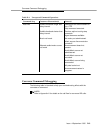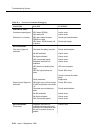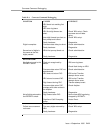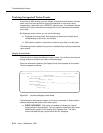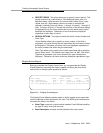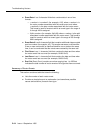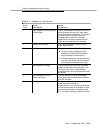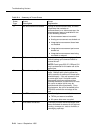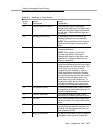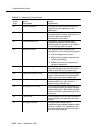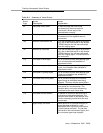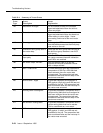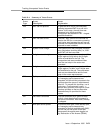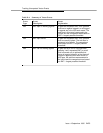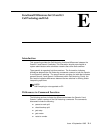
Tracking Unexpected Vector Events
Issue 4 September 1995
D-17
32 Prompting buffer overflow The prompting digit buffer already
contained the maximum of 24 digits when
additional dial-ahead digits were entered
by the caller. These additional digits are
not stored.
40 Messaging step failed A messaging step failed because the
Messaging Adjunct was not available.
NOTE: Event types 540 and 541 may be
observed for the same call at the same
time.
50 Route -to step failed A
route-to
step failed to reach the
intended destination.
NOTE: Event types 51 and 52 may
provide more specific information
regarding the reason for the failure. See
Appendix G, "Operation Details for the
Route-to Command".
51 No digits to route-to The
route-to digits
step was unable to
route the call because the previous
collect
digits
step failed to collect any digits. This
could result from an error in vector
programming (for example, a
route-to
digits
step appears without a preceding
collect digits
step). More often, however,
this results because the caller was unable
to enter the required digits (that is, the
caller was using a rotary telephone), or
because the caller was not provided with
enough information to do so (as can be
the case for auto-attendant applications).
52 No available trunks A
route-to
command was unable to reach
the specified off-switch destination due to
a lack of available trunks.
53 Route-to step failed The step was unable to seize a trunk
because of a hardware problem or glare.
54 LAI retry Look Ahead Interflow
route-to
step failed
because of glare. The route will be retried
once.
55 Double coverage attempt Coverage option on route-to step was
ignored because double coverage is not
allowed. This may happen when the call
has covered to a VDN.
60 Adjunct route failed An adjunct route failed for one of reasons
indicated in event types 61 through 66.
Table D-4. Summary of Vector Events
Event Event Event
Type Description Explanation



